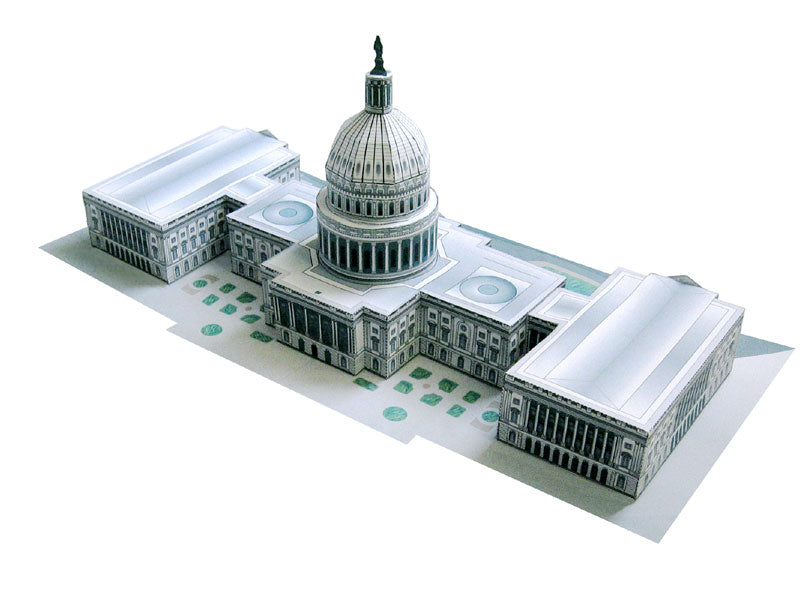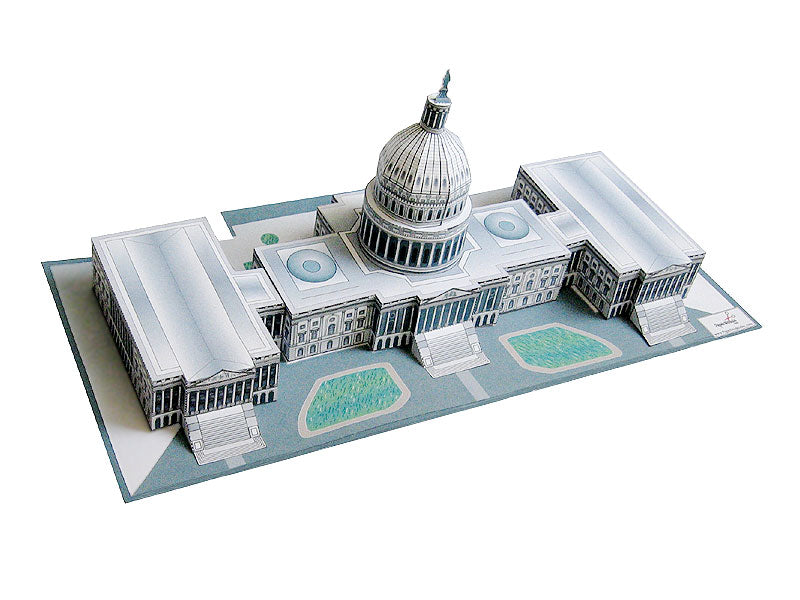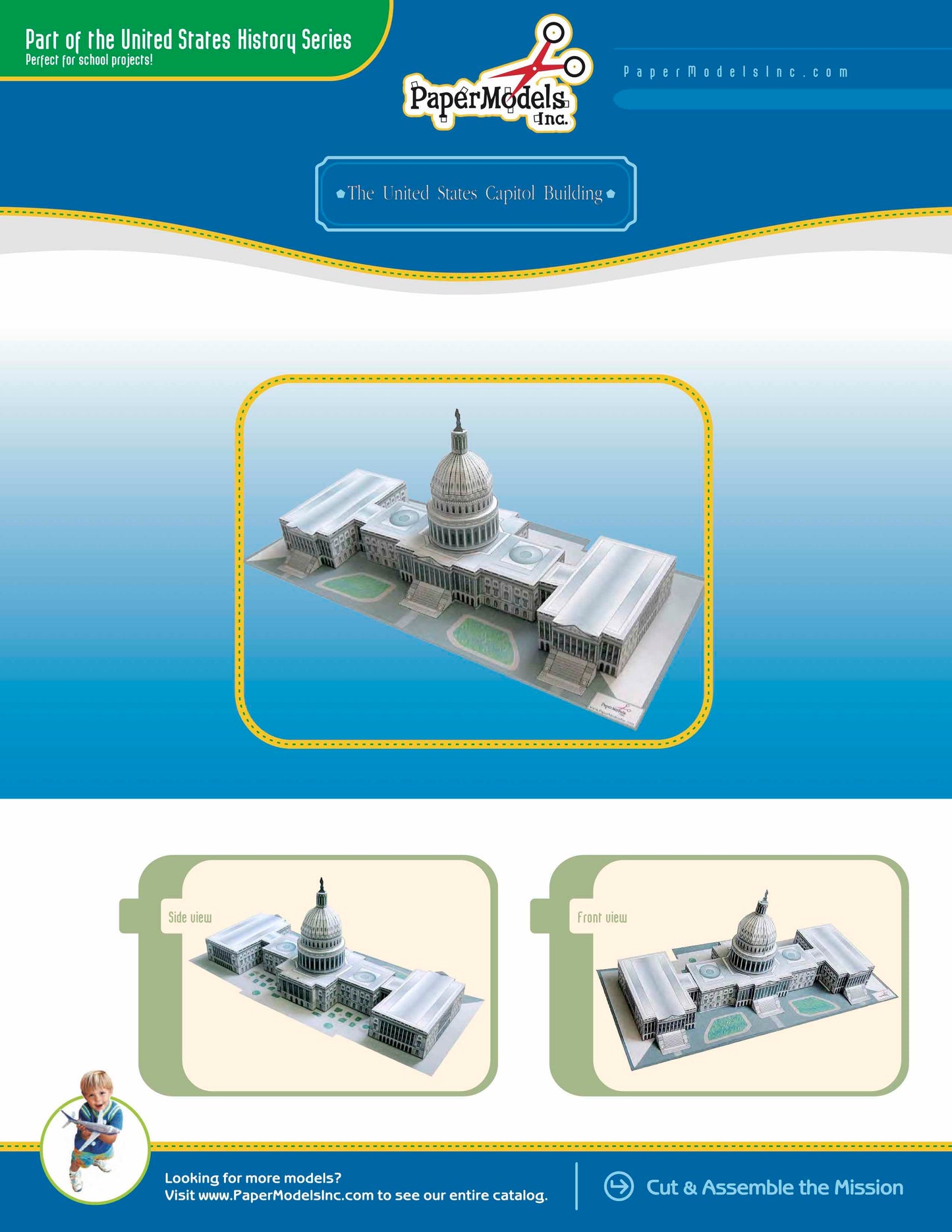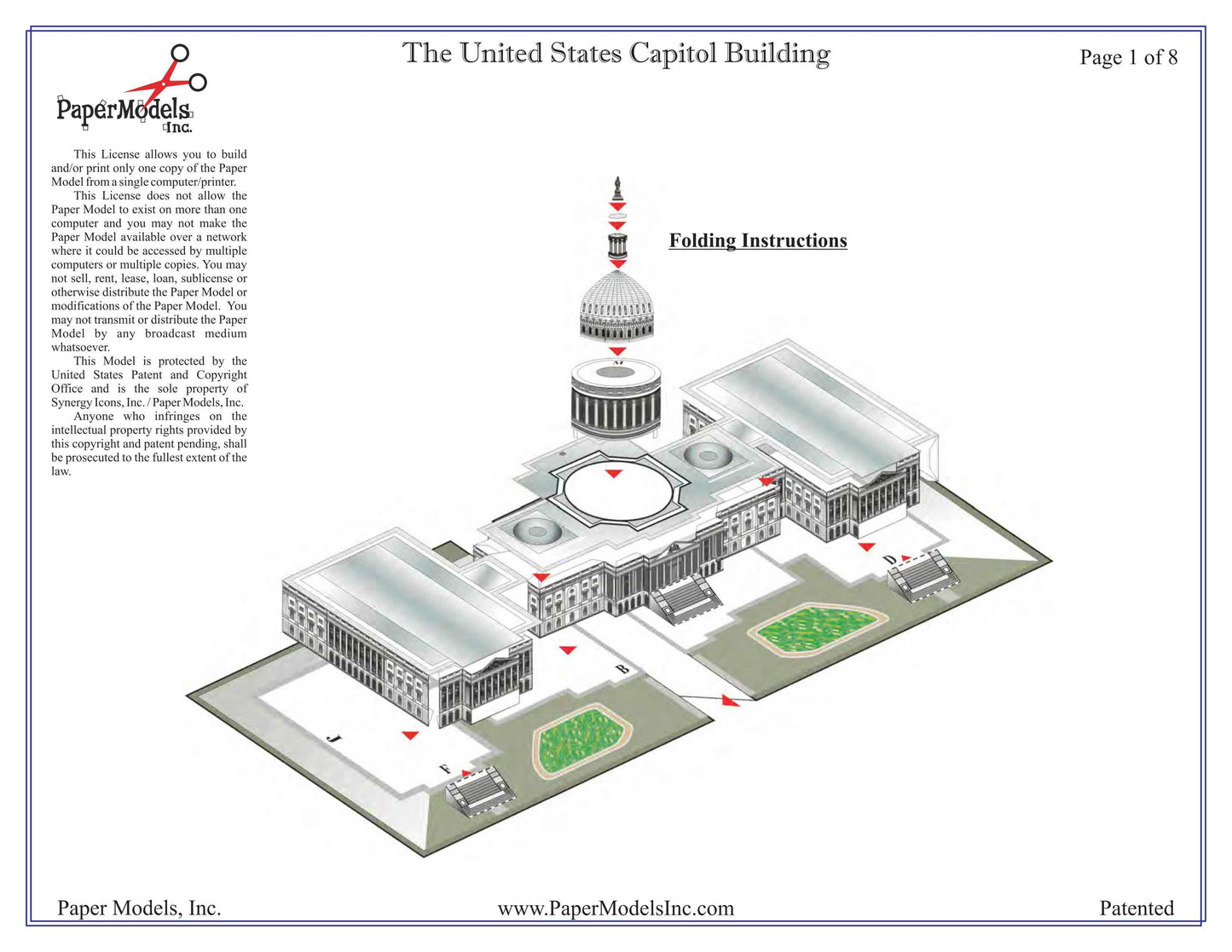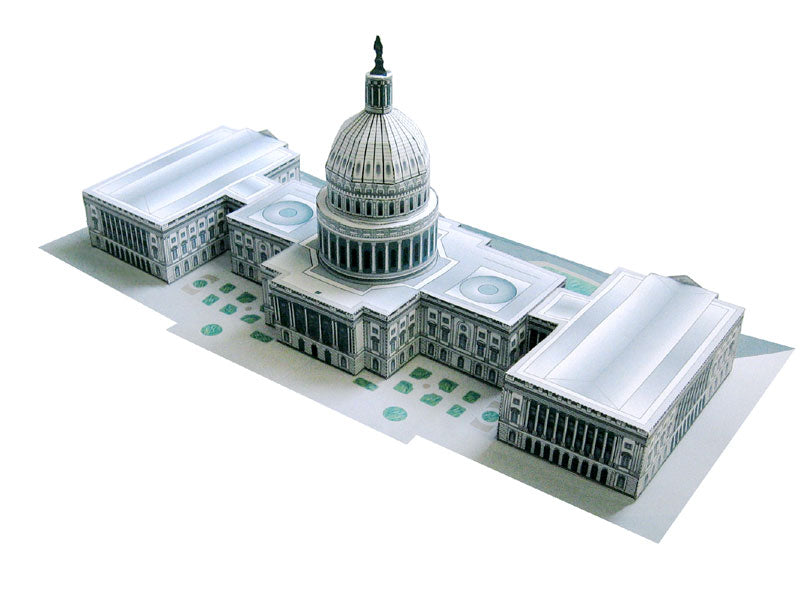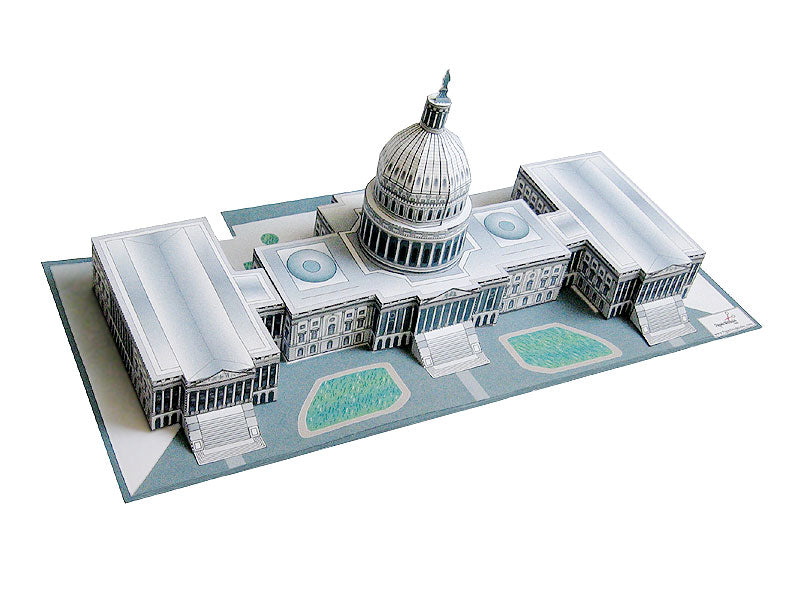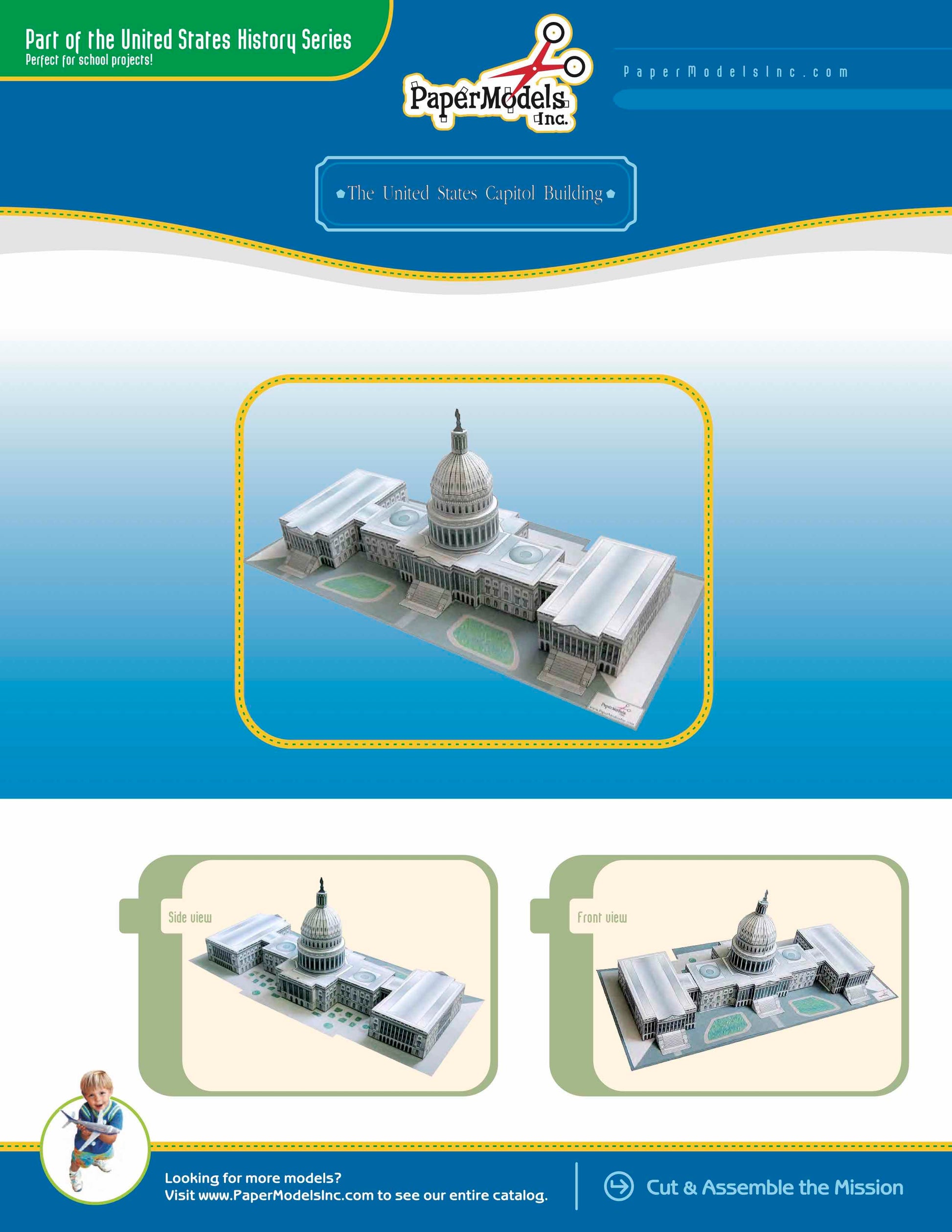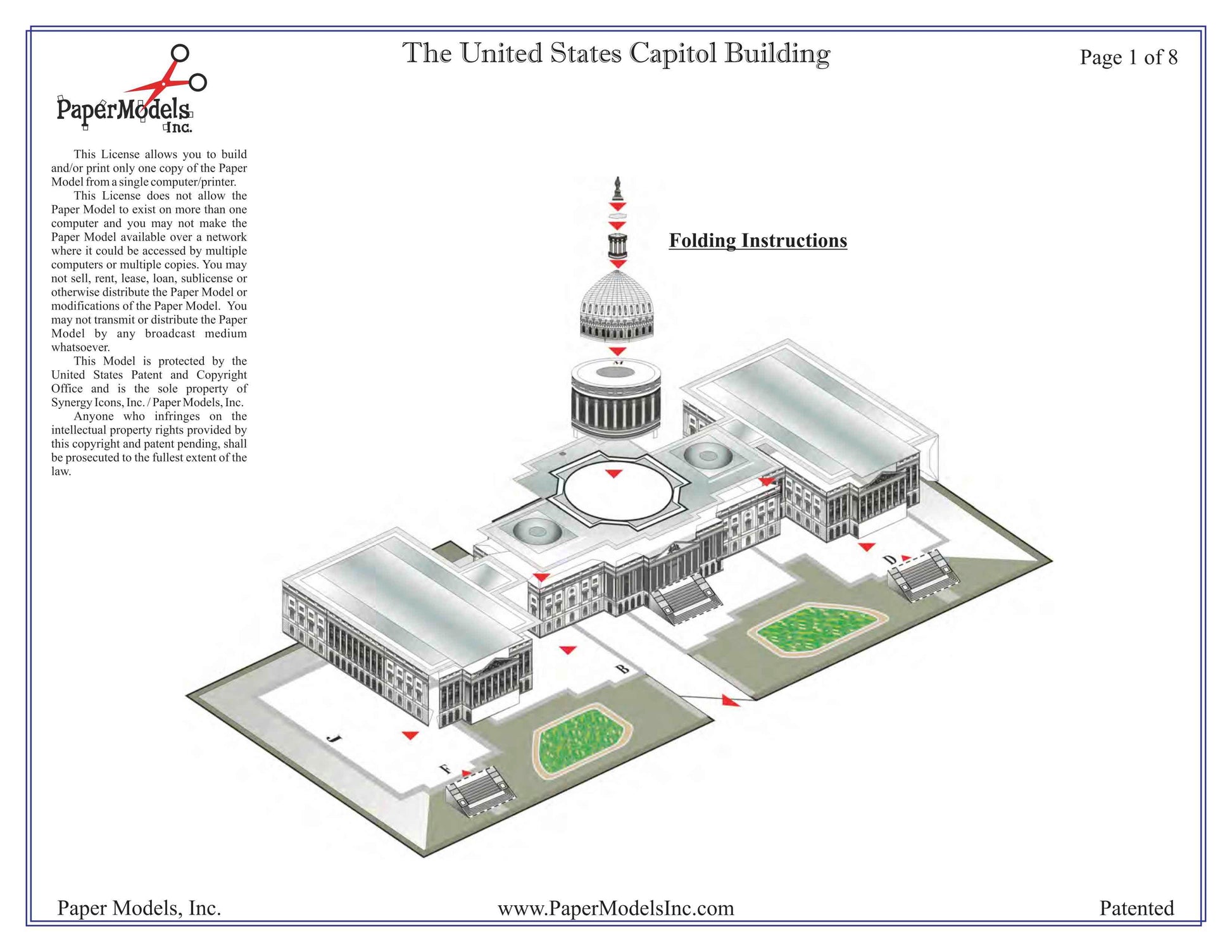Capitol Building - Washington, D.C. - Paper Model Project Kit
Capitol Building - Washington, D.C. - Paper Model Project Kit
No se pudo cargar la disponibilidad de retiro
🌟 Welcome to Paper Models Online – Your Shortcut to Academic Excellence! 🌟
Are you tired of stressing over last-minute school projects? Look no further! Paper Models Online is here to make your academic life a breeze.
🚀 Why Choose Us?
At Paper Models Online, we understand the pressure of looming deadlines and the desire for that coveted "A" grade. That's why we've crafted the perfect solution for you! Whether you're a student aiming for extra credit, a parent looking for quality time with your kids, or just someone in need of a break from the chaos, our paper models are your ticket to success!
💻 Instant PDF Download OR Pre-Printed & Shipped
You're in control! Choose from our instant PDF download, starting at just $9.95 for the 7"x10" size or $11.95 for the 10"x13" size.
Print it on your home or office printer using regular paper, or opt for the hassle-free pre-printed option. We'll ship it directly to your doorstep for a flat $5 fee via USPS First-Class Parcel, ensuring you get it in 1-3 days!
✂️ Easy Assembly, Maximum Impact
With just a pair of scissors, some glue, and an hour of your time, you can turn these paper sheets into stunning three-dimensional architectural replicas or complete science projects. The images on our website are real models made from our kits, and we even provide a history to help you craft an impressive report.
🎨 Unleash Your Creativity
Not into mission kits? No worries! Our models double as templates for your creative genius. Paint, trace, adjust sizes—your imagination is the only limit! Create a custom masterpiece that reflects your unique style and personality.
🛒 The Buying Process Made Simple
- Choose Your Size: 7"x10" or 10"x13"
- Choose Your Delivery: Instant PDF download or pre-printed and shipped
- Purchase Your Model: It's that easy!
The Buying Process

📦 Typical Kit Sample
Each kit includes 8 to 18 pages, providing everything you need to bring the model to life. An "exploded view" guides you through assembly, and a complimentary history adds that extra touch for your report. Impress your teacher not just with creativity but also with your research skills!
Don't let deadlines stress you out. Choose Paper Models Online for your next school project, and let us be Your Best Way To Get An "A"! 🌟
 |
 |
 |
| Exploded View | Sample Pieces | Finished Model |
Free History For Your Report
THE U.S. CAPITOL BUILDING
The U.S. Capitol Building in Washington, D.C., is not only one of the most recognized buildings in the world, it is one of the most important. Important and powerful men and women meet within this neo-classical structure everyday to conduct important business that affects the daily lives of American citizens, and sometimes, world citizens. The Capitol Building was one of the first new structures planned in early 1970, for the newly created District of Columbia, a plot of land given by the State of Maryland to The United States Government. This new District of Columbia was to be the home of the most important city in America: Washington. It was named after the first President of The United States, George Washington.
The biggest hill in the new District was Jenkin's Hill, which was quickly renamed Capitol Hill. At the peak of Capitol Hill was to be the Capitol Building. Soon after, the famous French architect Pierre Charles L'Enfant was hired to design the building plan for this new government structure. However, he never provided a building plan, which led Secretary of State Thomas Jefferson to hold a contest for the winning bid. This still didn't provide a winning solution. Finally, a resident of the British West Indies, William Thorton, submitted a plan that won over the hearts of the commission. George Washington gave permission to the plan, and he himself laid the cornerstone to the building on September 18, 1793. The sandstone used was sent on ferry to D.C. from Virginia, and work in the once untamed wilderness back in those days was hard and expensive. Only a small portion of the building was completed in 1800, when the first government officials moved in. The South Wing of the Capitol was the next portion to be completed, in 1800.
The responsibility of building this structure was passed to several architects over the years, and it was not until 1829 that the final architect of the building's first completion, Charles Bulfinch, was done on his work. Bulfinch was mainly in charge of completing the building's middle section, which included a copper dome. However, it only took twenty years for the building to become too small. The United States of America was growing so quickly, the small building could not fit every member of the Senate and House of Representatives. Again, a series of architects were challenged with the rebuilding and expansion of the existing building. Budget cut backs, along with a fire in the Library of Congress within the Capitol, made the work long and hard. During the last half of the 19 th century, as the Capitol was nearing completion, the work focused on the modernization of the building rather than expansion. Heating, elevators, and eye-pleasing features such as marble terraces became the main focus. In the first half of the twentieth century, very few changes were made to the building itself, except for a small expansion on the east side, along with general repairs.
Today, the Capitol Building is the centerpiece of nine other Capitol Hill buildings, known as The Capitol Complex. The nine other buildings include Congressional buildings and structures for the Library of Congress. Today visitors from across the world can tour the Capitol, which has become famous as a museum of American art, along with being one of America's most famous buildings. The five levels of the building are capped off with a new dome in the center, upon which stands the Statue of Freedom.
The first floor mainly consists of congressional and committee meeting spaces, as well as access to the Crypt, a below-level space where exhibits are often held. The second floor is comprised of mostly offices and the Chamber of the House of Representatives. The third floor consists of mostly offices, as does the second floor. Visitors who wish to watch Congress and the House of Representatives in action may do so from viewing galleries located on the third floor. All in all, the Capitol covers four acres.
© Copyright – Paper Models, Inc. – All Rights Reserved
Share
